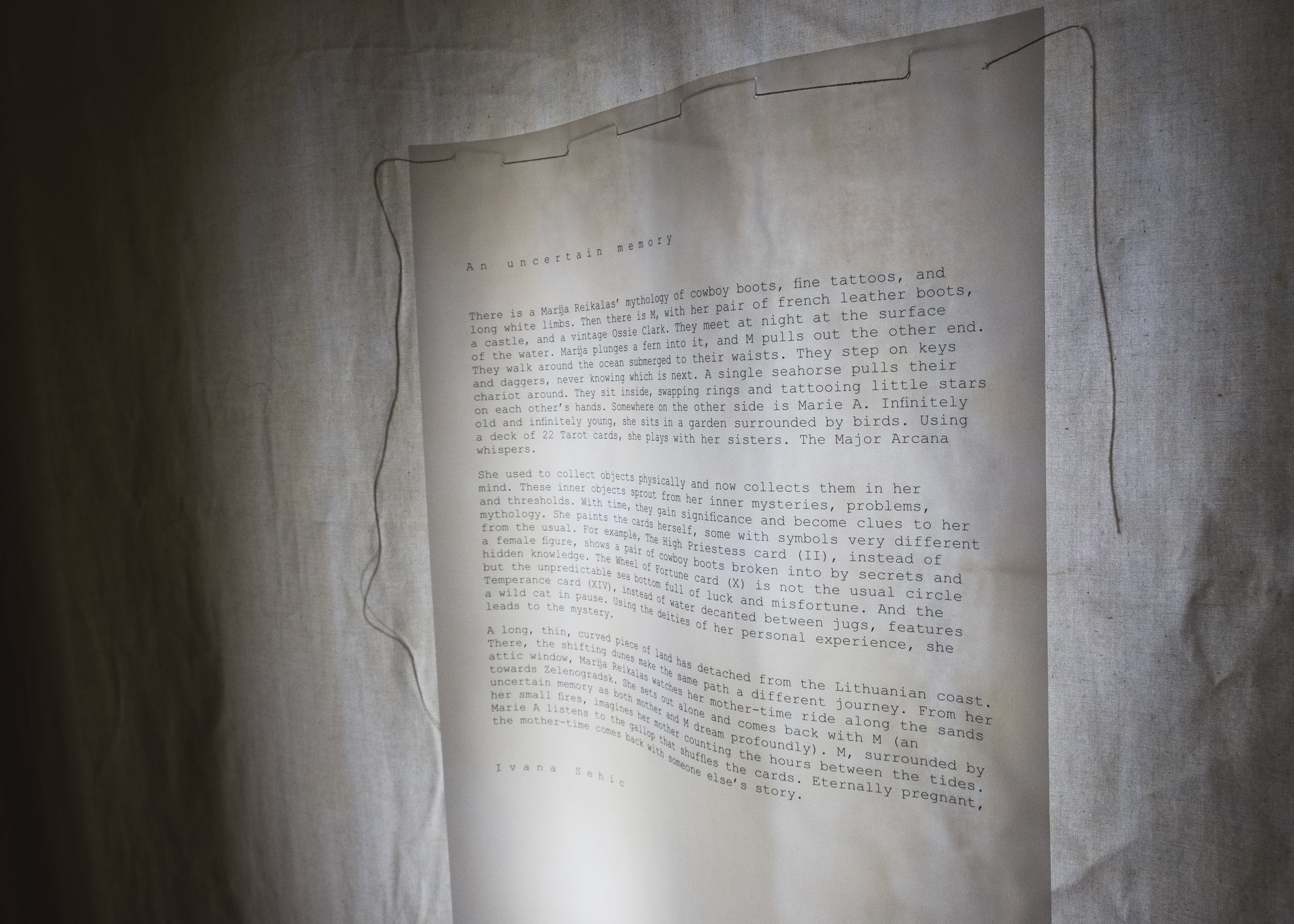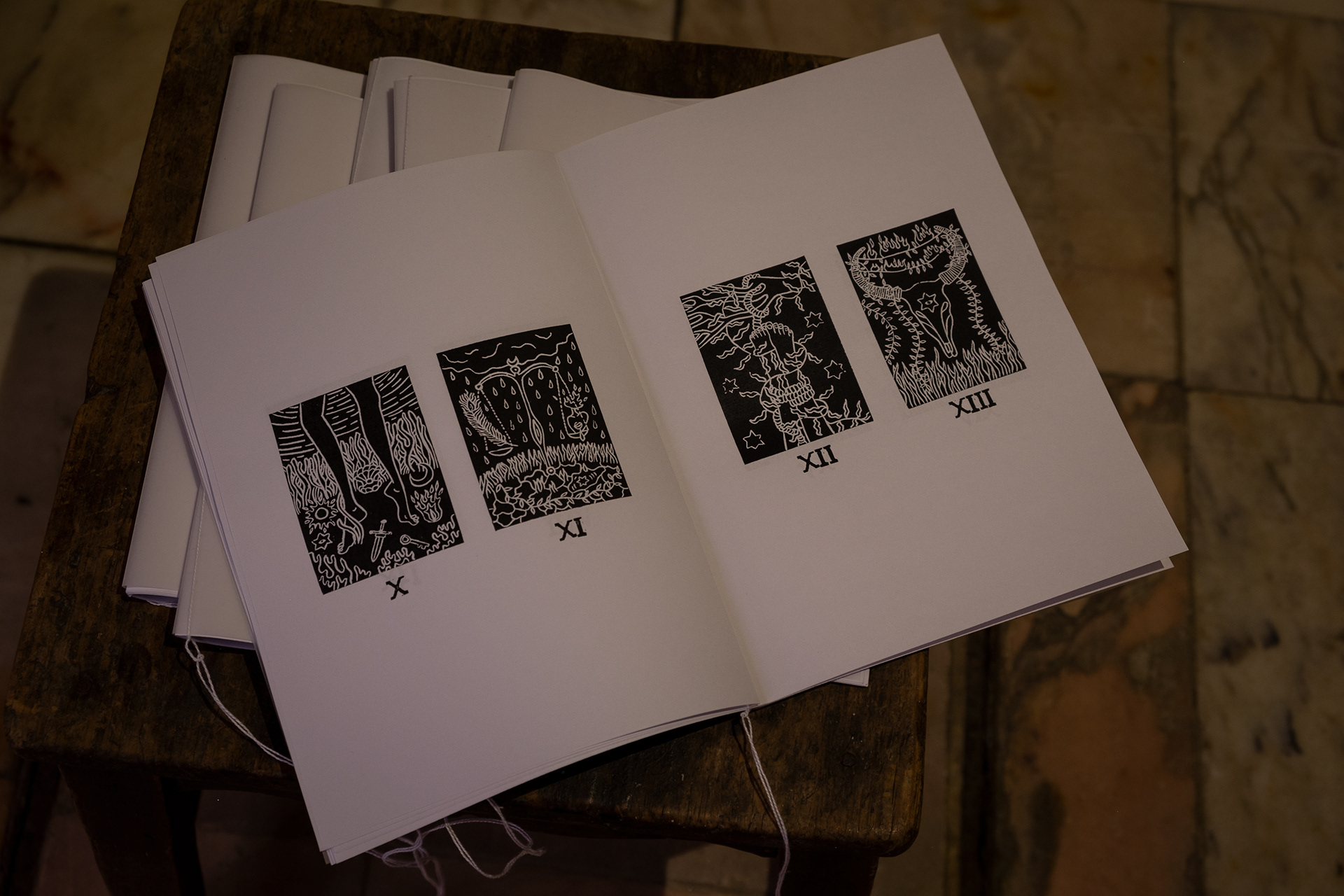Exhibition took place between 14th and 28th of January, 2023 at O Estúdio gallery space in Porto. Exhibition was curated by Ivana Sehic, who created the installation of fabric and lights. There were live tarot readings performed during the events of inauguration and finissage. Exhibition was on view only after the dusk and used candles, specially designed illumination and street lights as sources of light.
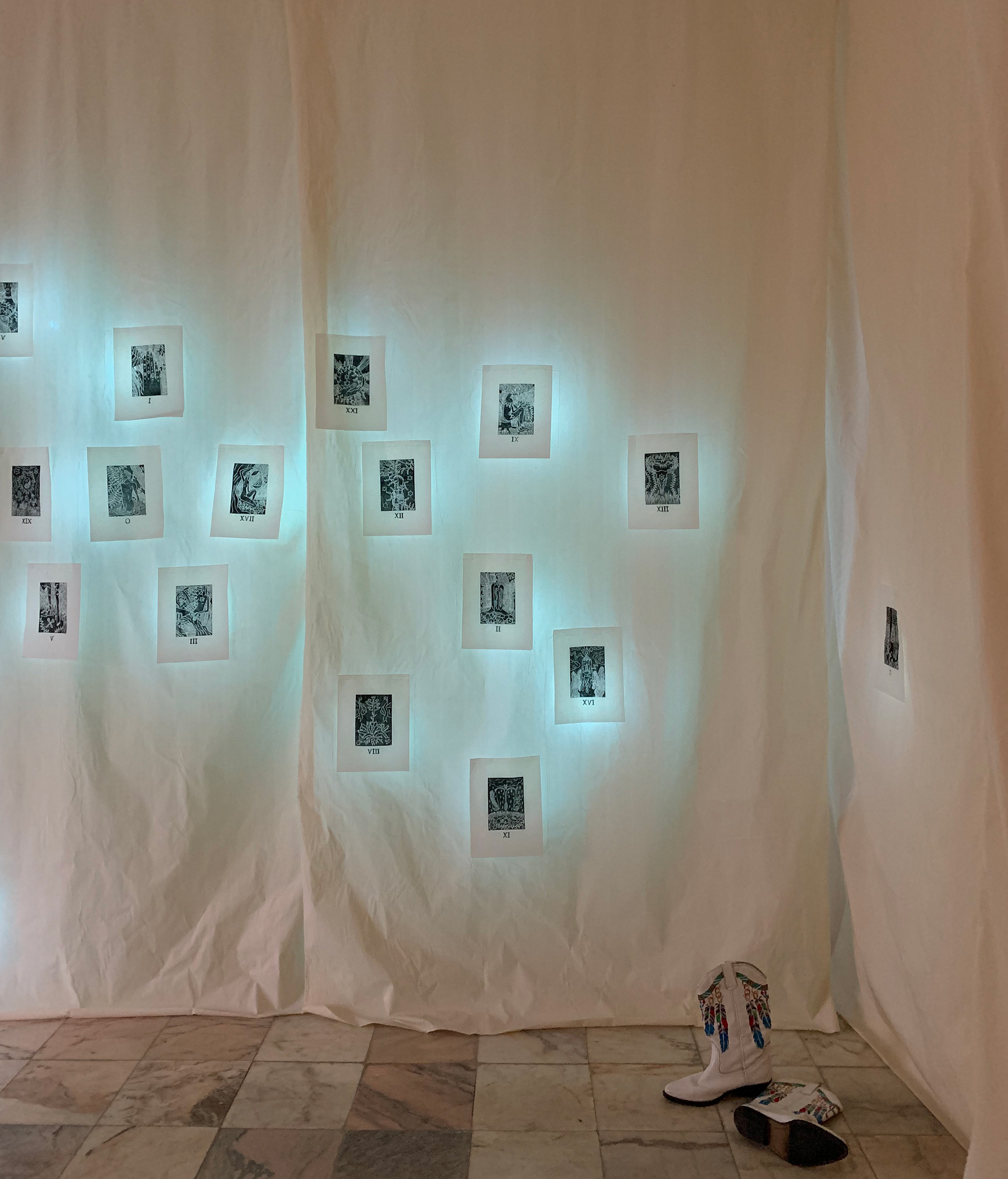
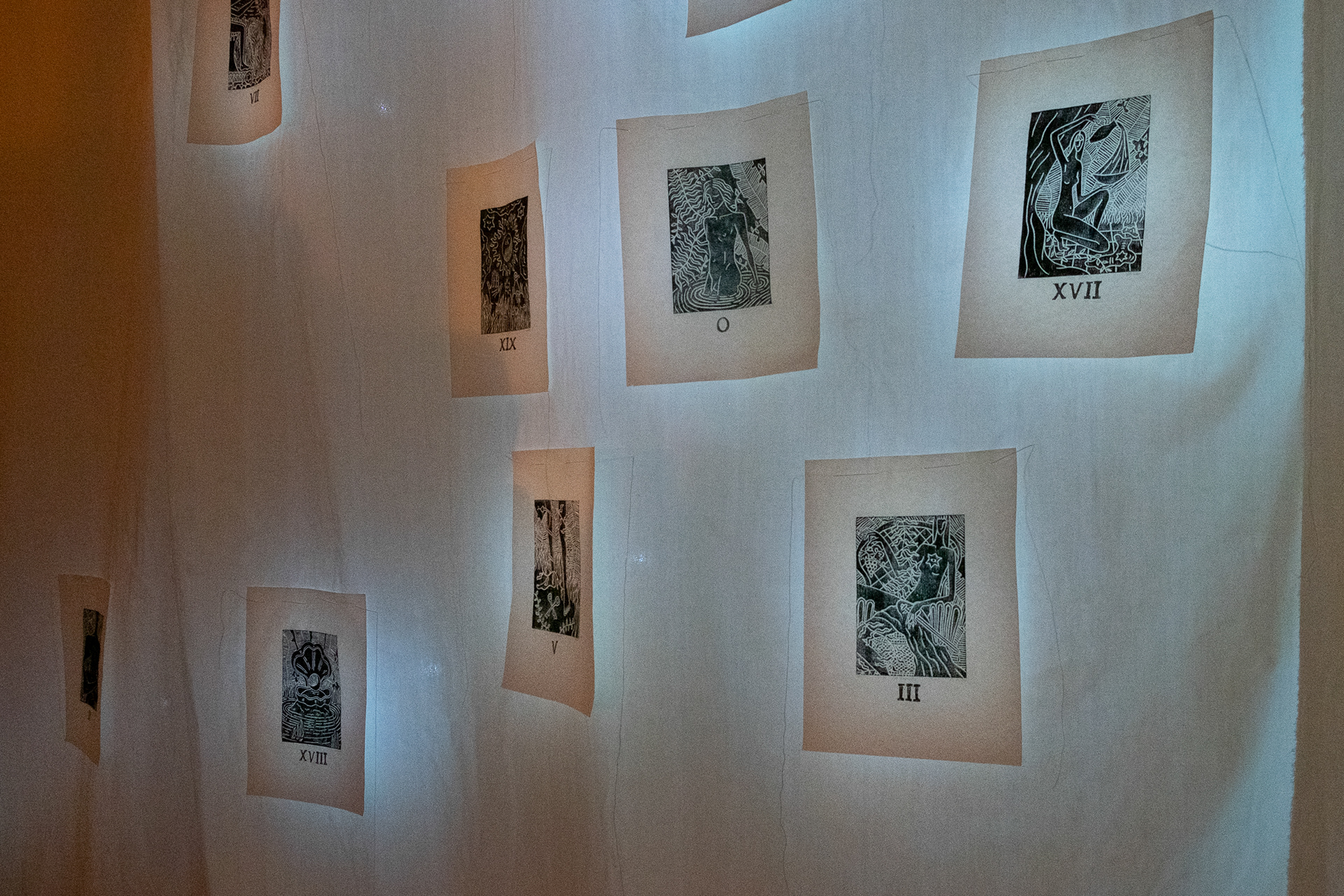
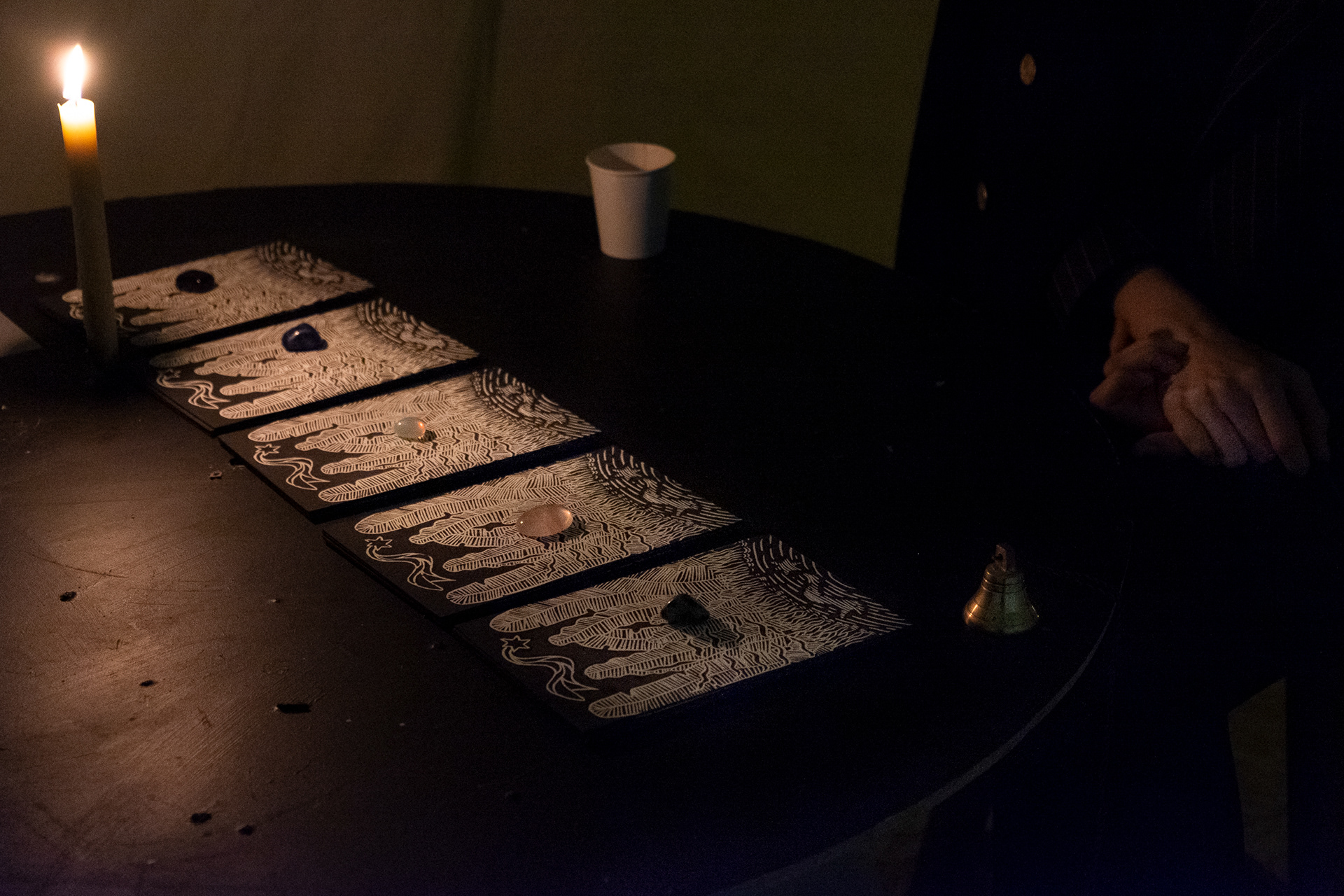

T a r o c c h i M a r i e A l e b a s t r o
In 1998, a curious traveler in Southern Italy stumbled upon a fascinating discovery. Surrounded by tall grass, a tiny abandoned 19th Century villa stood in an overgrown English-style garden. Its exterior walls were nearly hidden beneath many layers of trellised ivy which made the property appear unusually viridescent in the arid summer landscape and shielded it from the intense heat of the southern sun. Exploring the abandoned property, the young man found an old cardboard box on the rotted wooden floor. Inside the box, he found an impeccable condition deck of cards with peculiar images. More than the house, these mysterious cards led to inquiries of their origin.
According to official records, the property belonged to the Alebastro family. Neighbors believe the house (located near Tropea, on the shore of Tyrrhenian Sea) has been uninhabited since the beginning of the 20th century. No one remembers who used to live there. Only a handful of vague facts told by the village elders survived. So vague, it became hard to know if the stories were true or partly made-up. The elders recalled the name of a woman who once lived in the villa. Her name was Marie Alebastro, an old woman, always dressed in a long black dress, with a wide-brimmed hat decorated in tulle flowers. She would not leave the house without her white gloves and a monocle.
The oldest person in the village (a kid back then) would see her sitting in the shade of the garden in the late afternoon, sipping tea from the finest China set and reading for hours. Only birds in tall trees would dare to disturb the peace of the mysterious lady. The monocle she wore for reading gave her face a fierce expression, so the children would be slightly frightened by her presence. She did not look truly threatening, but radiated an unusual power of unshakeable solitude and seemed so comfortable in her own sovereignty, nobody dared to intrude.
M. Alebastro passed away silently, just as she lived. As time went on, less and less people remembered her legacy until there was almost nobody left. The only thing that remains today was a custom-made deck of 22 Tarot cards. Apparently, she commissioned an unknown artist to create the deck for her personal entertainment or secret occult interests.
While found in impeccable condition, the cards only contain the Major Arcana images from the classical Tarot deck. In the full glory of high contrast black and white, they were produced in linocut technique somewhere between 1870 and 1880 (hypothesis made based on the materials used). Even though linocut only became a common artistic medium around 1890, Marie Alebastro probably hired an innovative artist that pioneered the technique.
The lid of the box that contained the cards bears the inscription “Tarocchi Marie Alebastro” in a careless scribble of faded black ink. ‘Tarocchi’ is an old name for this kind of cards, used in Italy before the more recent name of ‘Tarot’ was widely adopted. All sequences are numbered in Roman numbers, which coincides with the better-known Rider-Waite Tarot deck. Nonetheless, in our deck, card imagery is bespoke, a free interpretation of illustrations normally seen in Major Arcana. Possibly, before their production, they were meticulously described by M. Alebastro to the artist in order to reflect her ‘self-mythology’. They all convey a lifelong collection of allusive visuals, that could be called ‘visions’, containing a special meaning for their owner. In other words, the cards are a set of invented ‘hieroglyphics’ or a secret visual language, which only can be fully understood by their author.
Even though most of the images are quite distant from the original imagery of Tarot cards, it is still possible to recognize each of them and use them for card games or divination practices. The roman numerals on each card correspond distantly to the numbers in the widely known Rider-Waite deck. For instance, the second card usually represents the High Priestess. In Marie Alebastro’s deck, it is represented as a pair of fine cowboy boots, staged in the middle of the lush forest. Or the card Zero, The Fool, is usually represented as a reckless, jolly, vagabond on the edge of a precipice. But, in the Marie Alebastro version it is a naked, dreamy Adonis.
There are several ongoing motifs, repeating throughout the image sequence – a hexagonal star with the eye in the middle, flames, various plant ornaments, reflections in the water, comets and daggers. Their exact meaning is unknown to us, and it is left to the free interpretation of the spectator. Some cards are very ‘theatrical’ instead. They resemble a photograph from a stage play frozen in time – archetypal stage design with symbolic actors bearing no names. Who are they? Their names are our names. The names change with the passage of time, as people live and die in a timeless infinite loop.
Tarot is an old game. It shape-shifted through the years and, after some time, gained the power of divination. Furthermore, it was (and is) used to read the past, the present and the future. That too is a game in a way, an interpretation game – to read yourself, or to read others through the mirror of yourself. To read your own mind and with the help of universal images, to gain a clearer vision of how things were, are or, most possibly, will be.
For the first time, 'Tarocchi Marie Alebastro' is available for public viewing. Most of the images remain unclear in their allegorical meaning, so the only way to understand them is through your own secret mirror. Look at them, ask a question and beware… You might find an answer.
Marija Reikalas
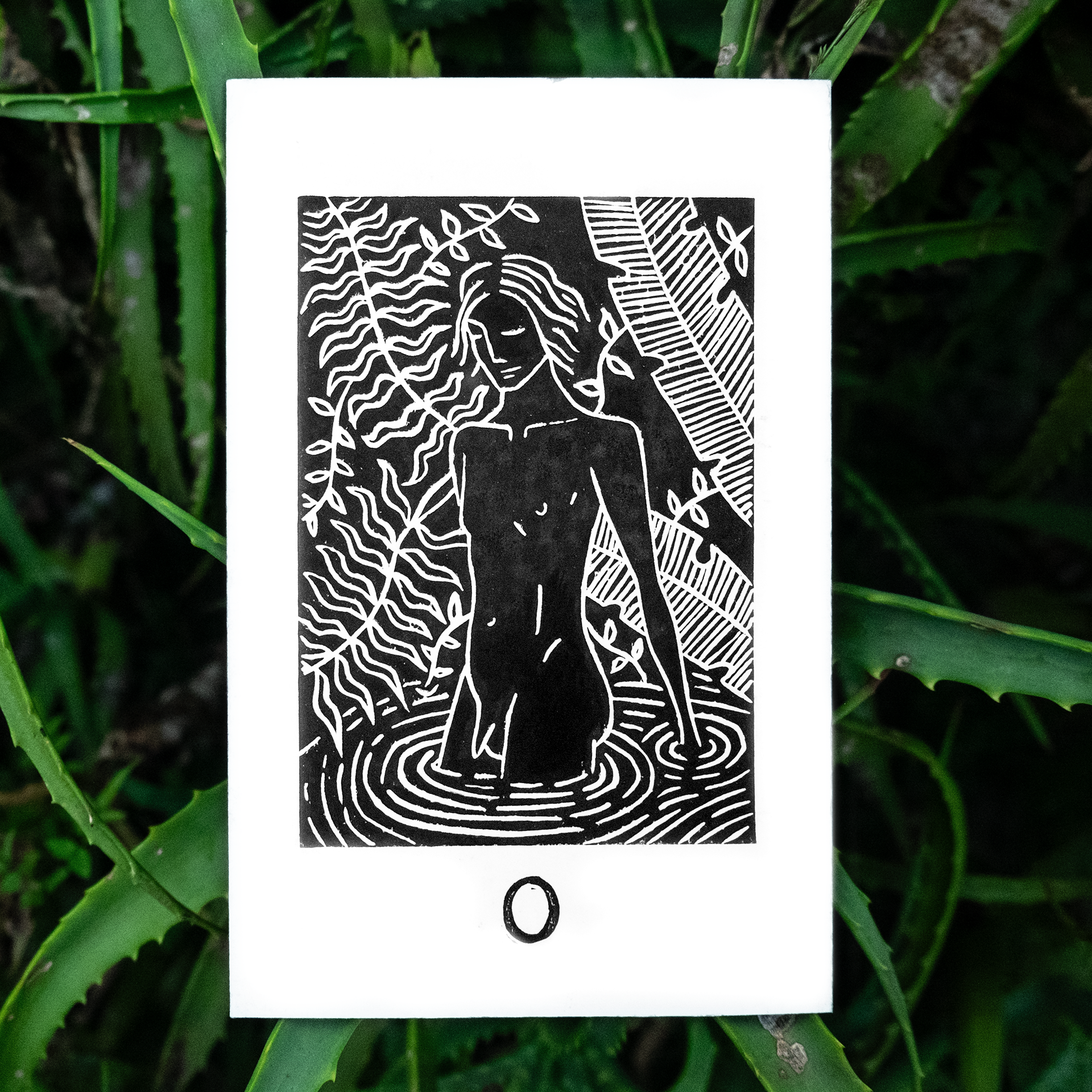

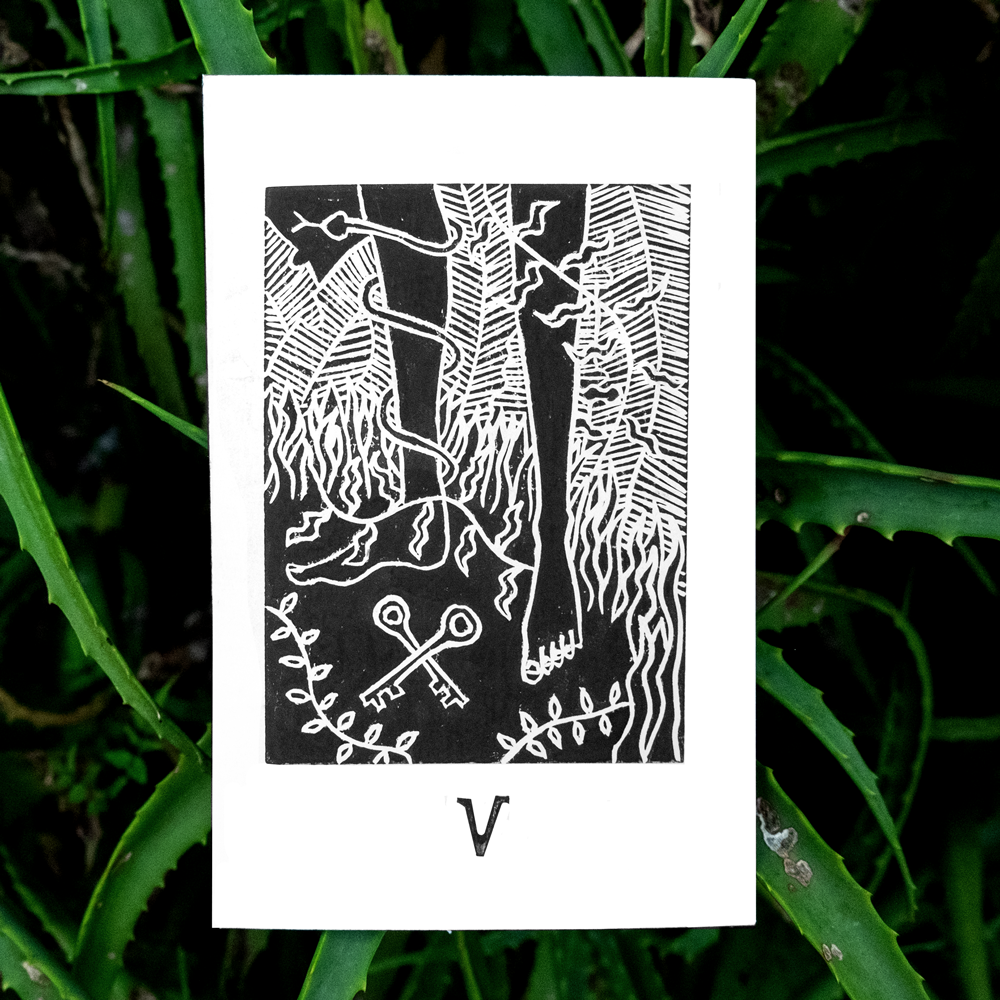
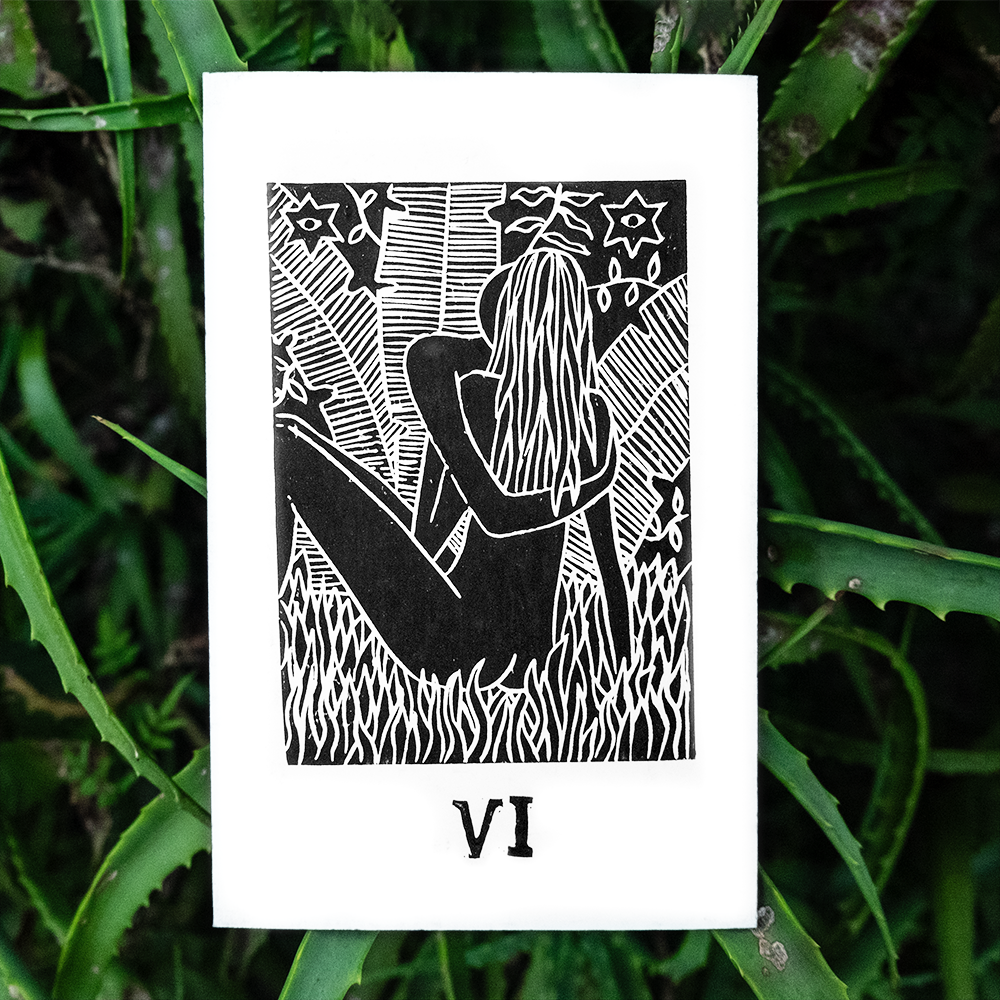
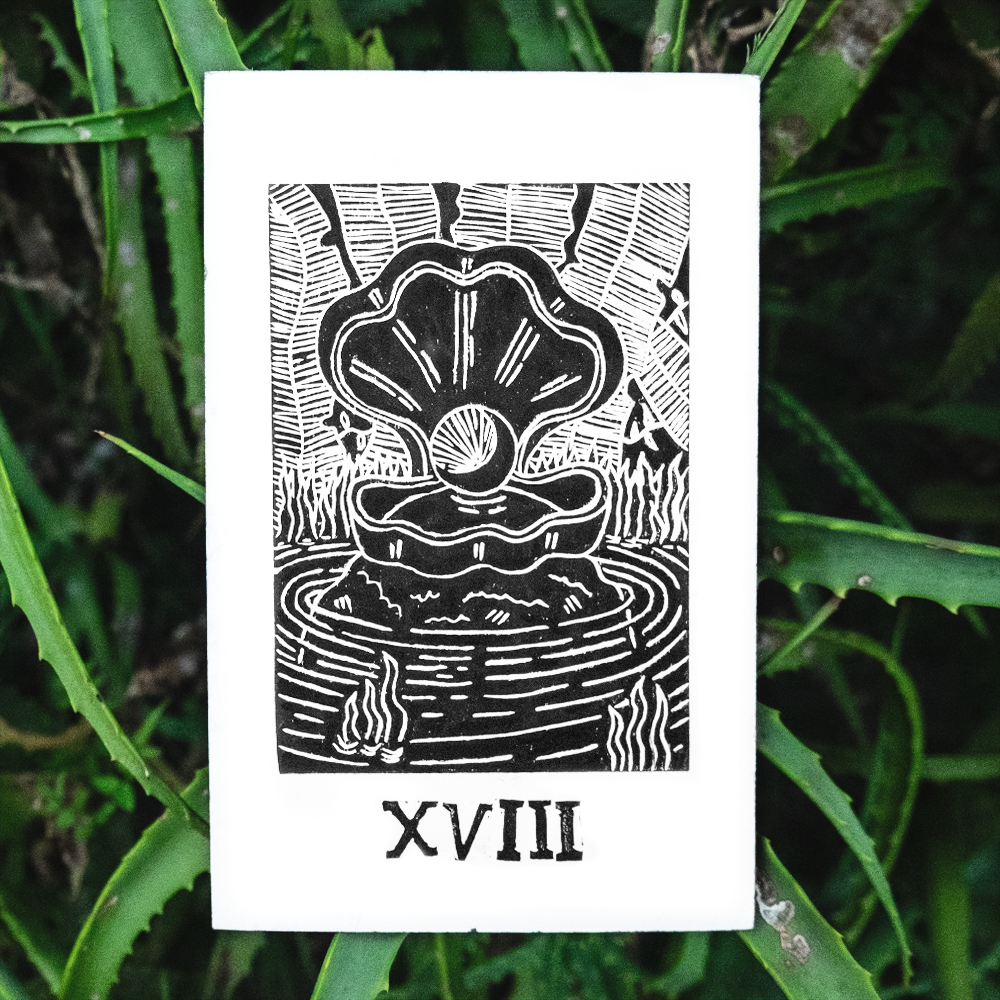
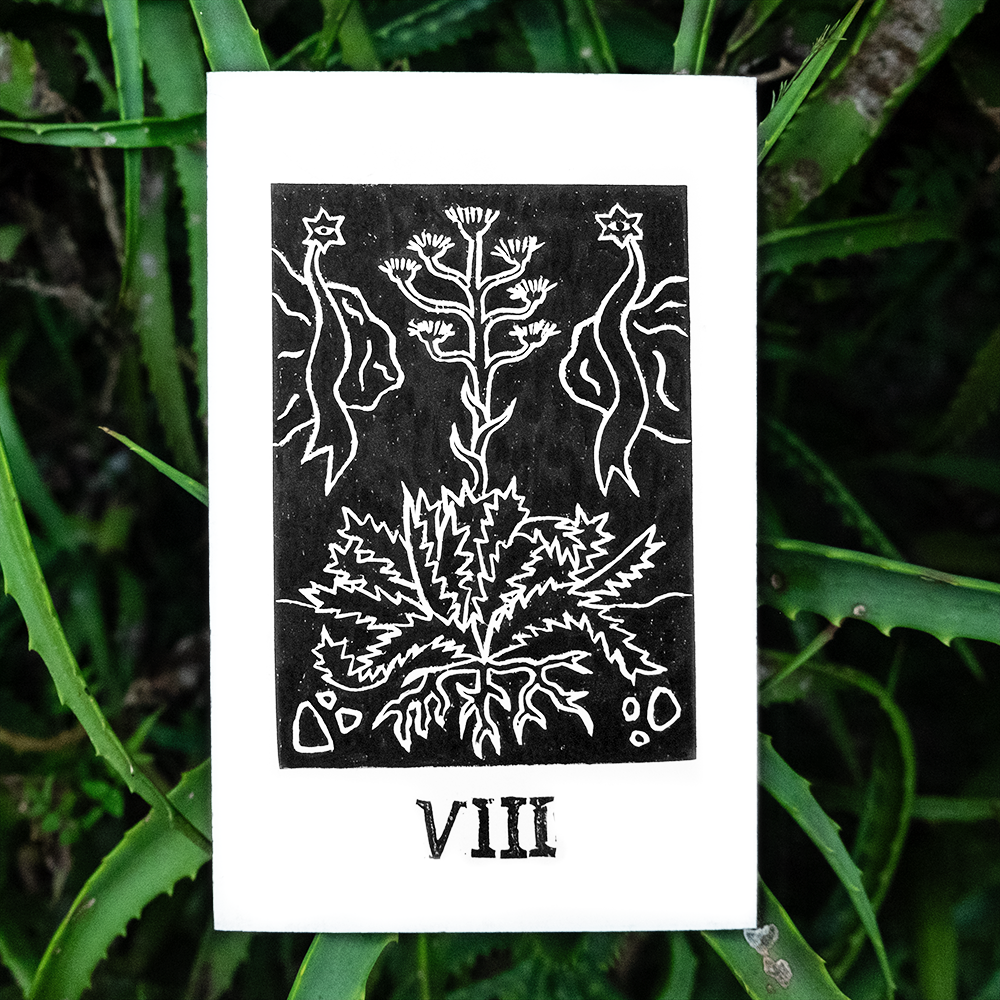


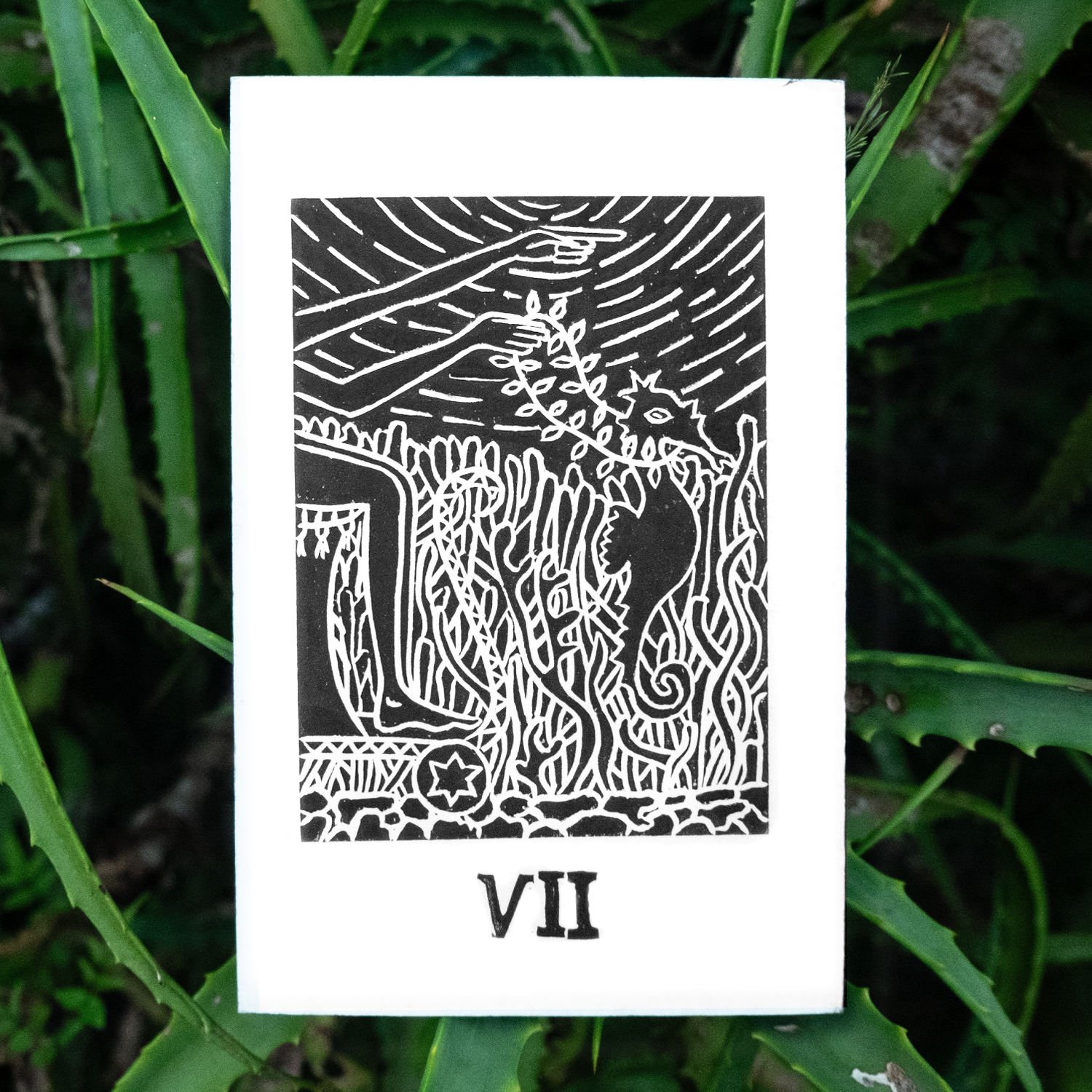
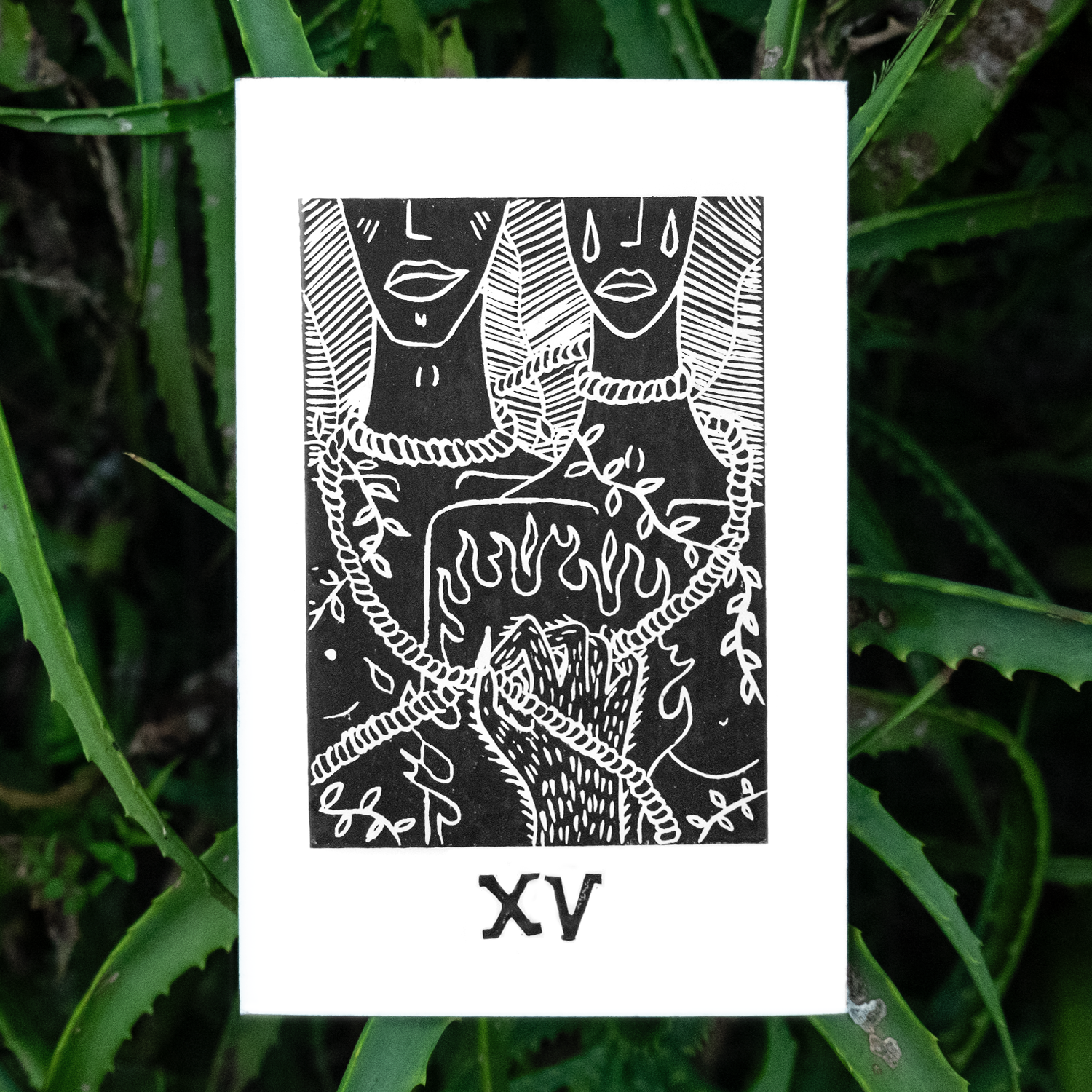
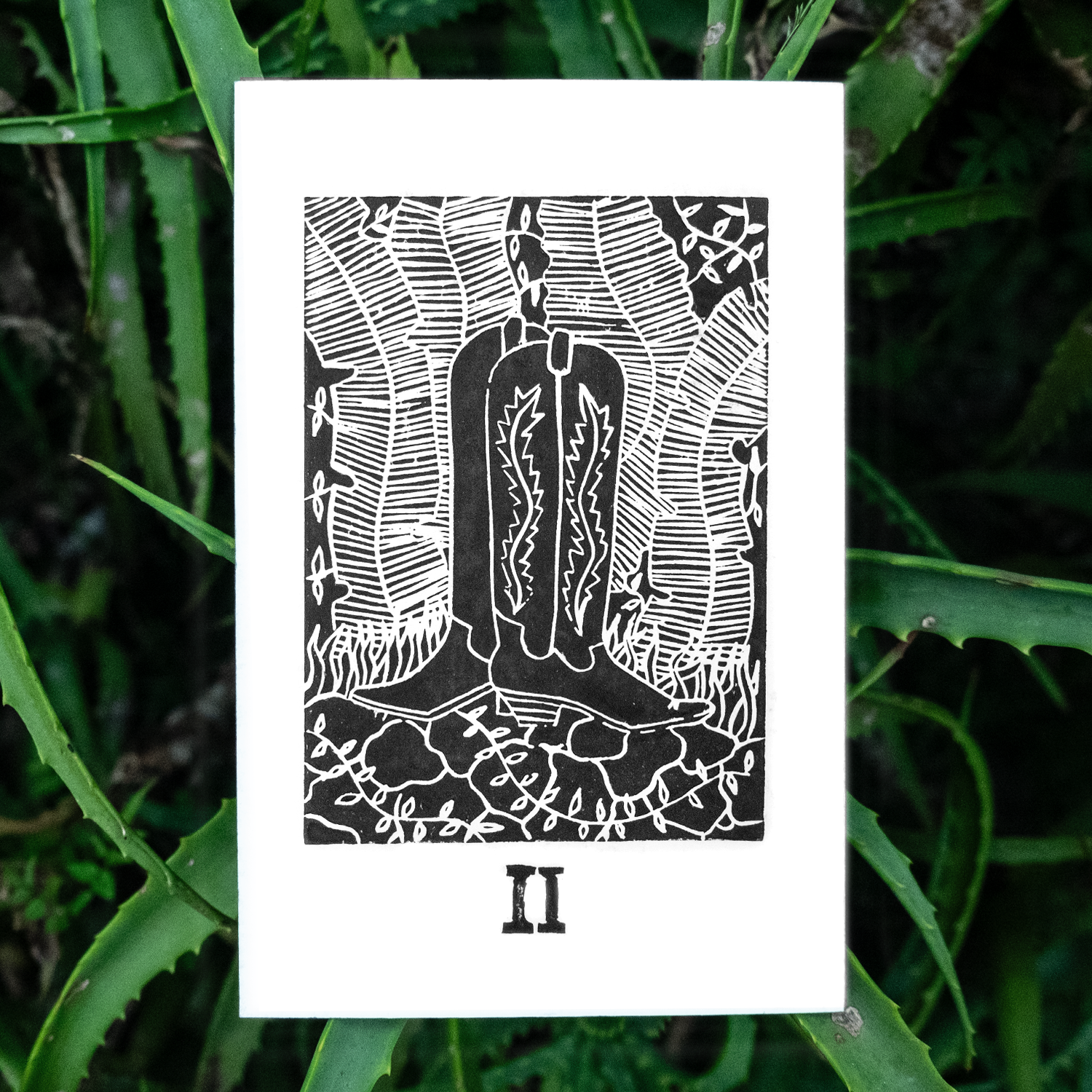

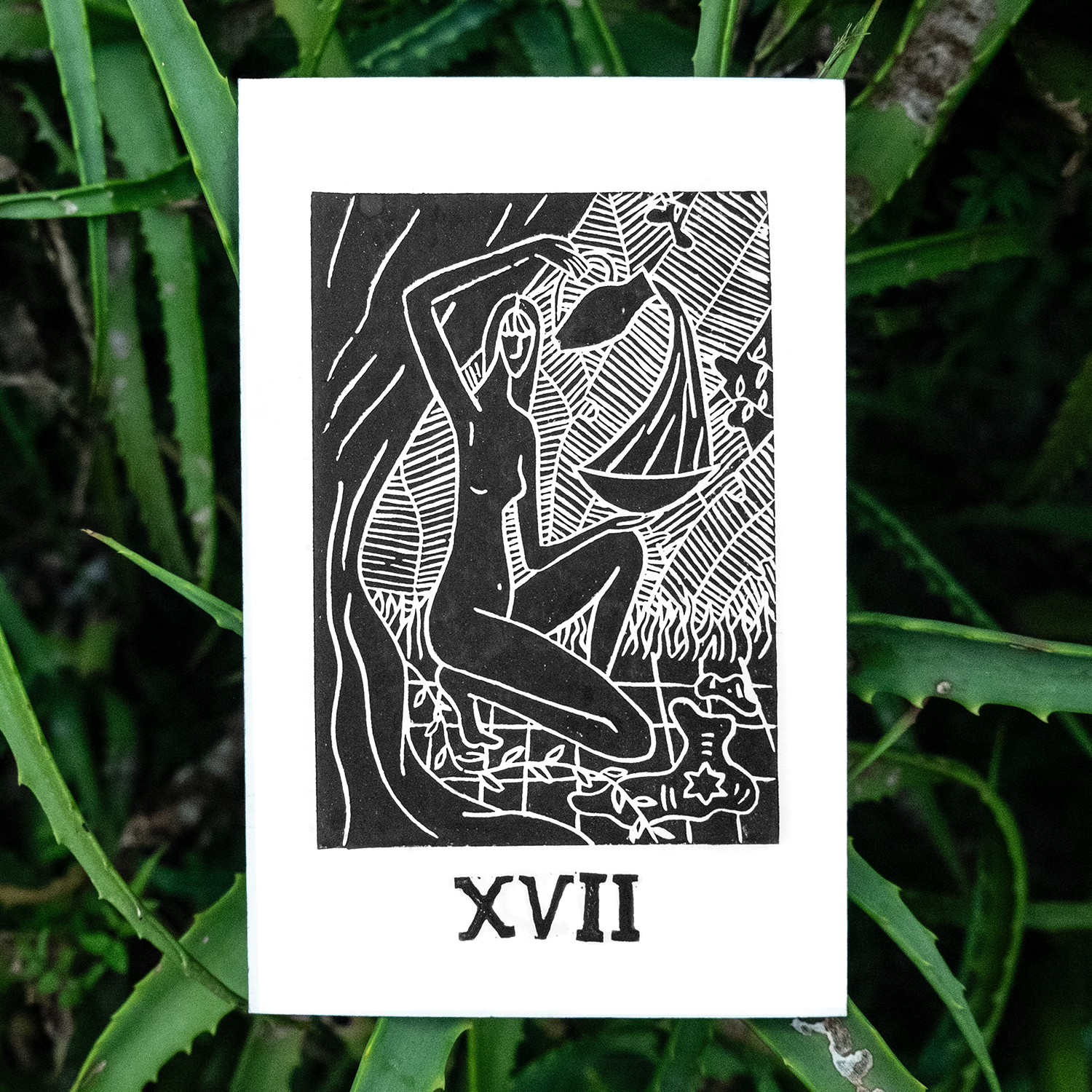
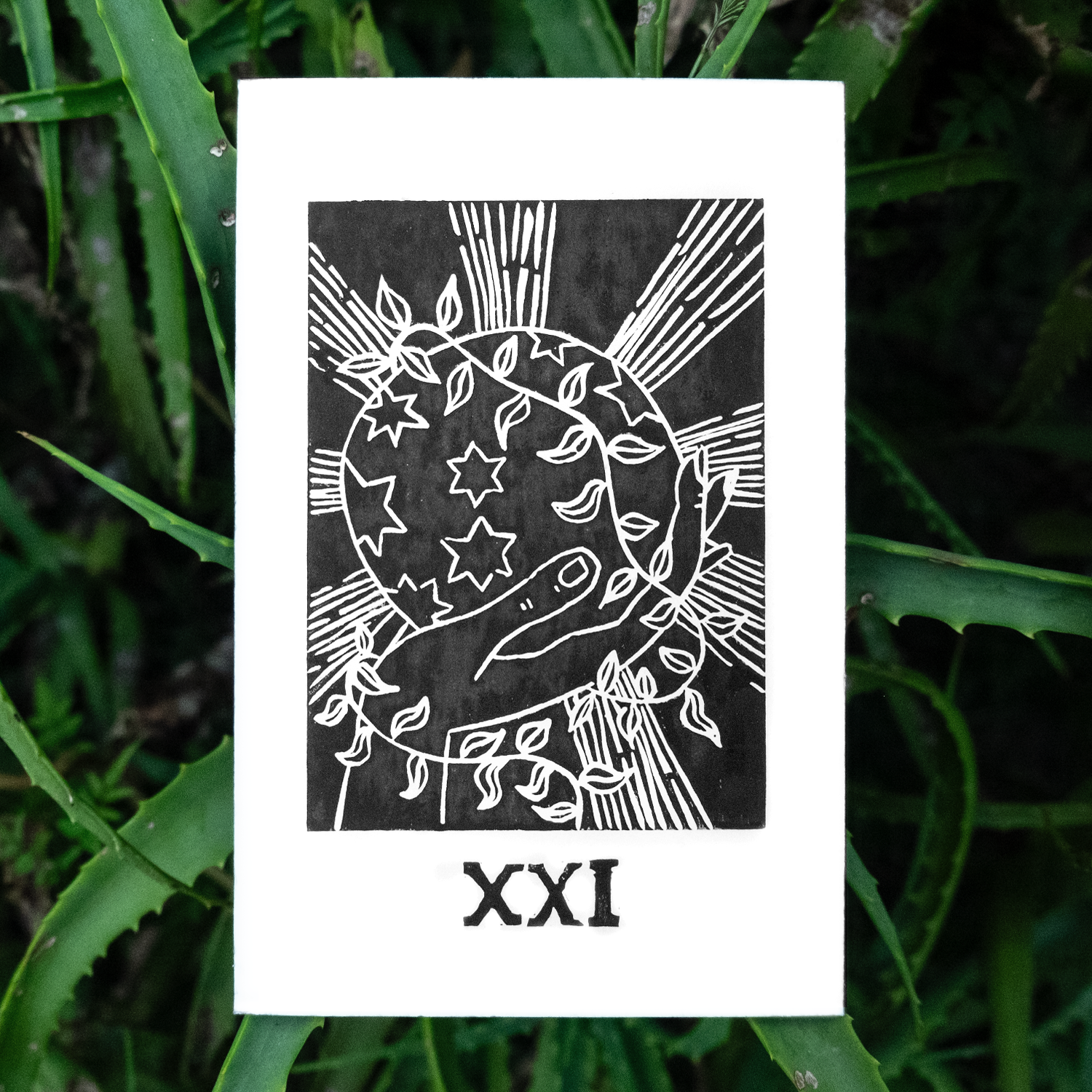
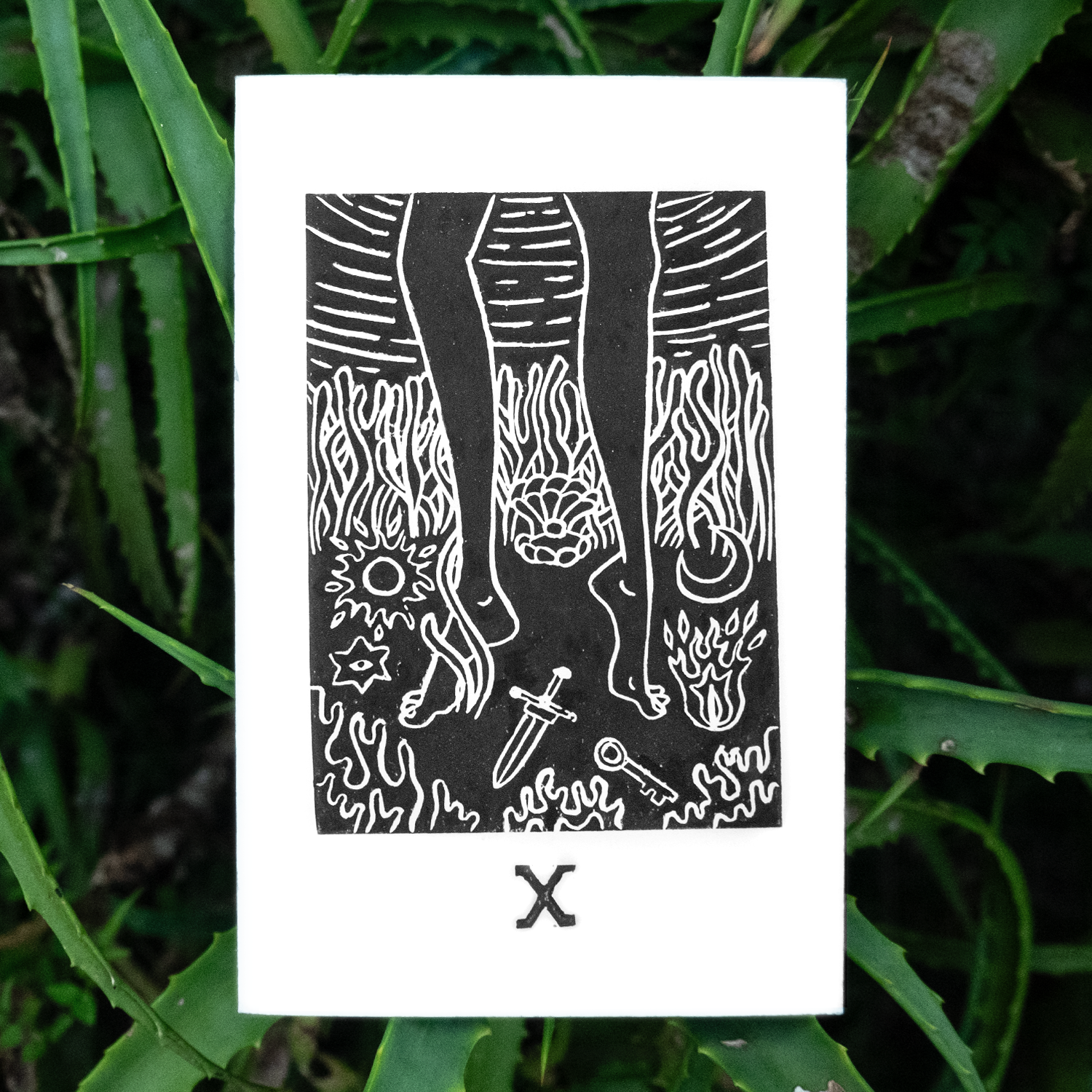
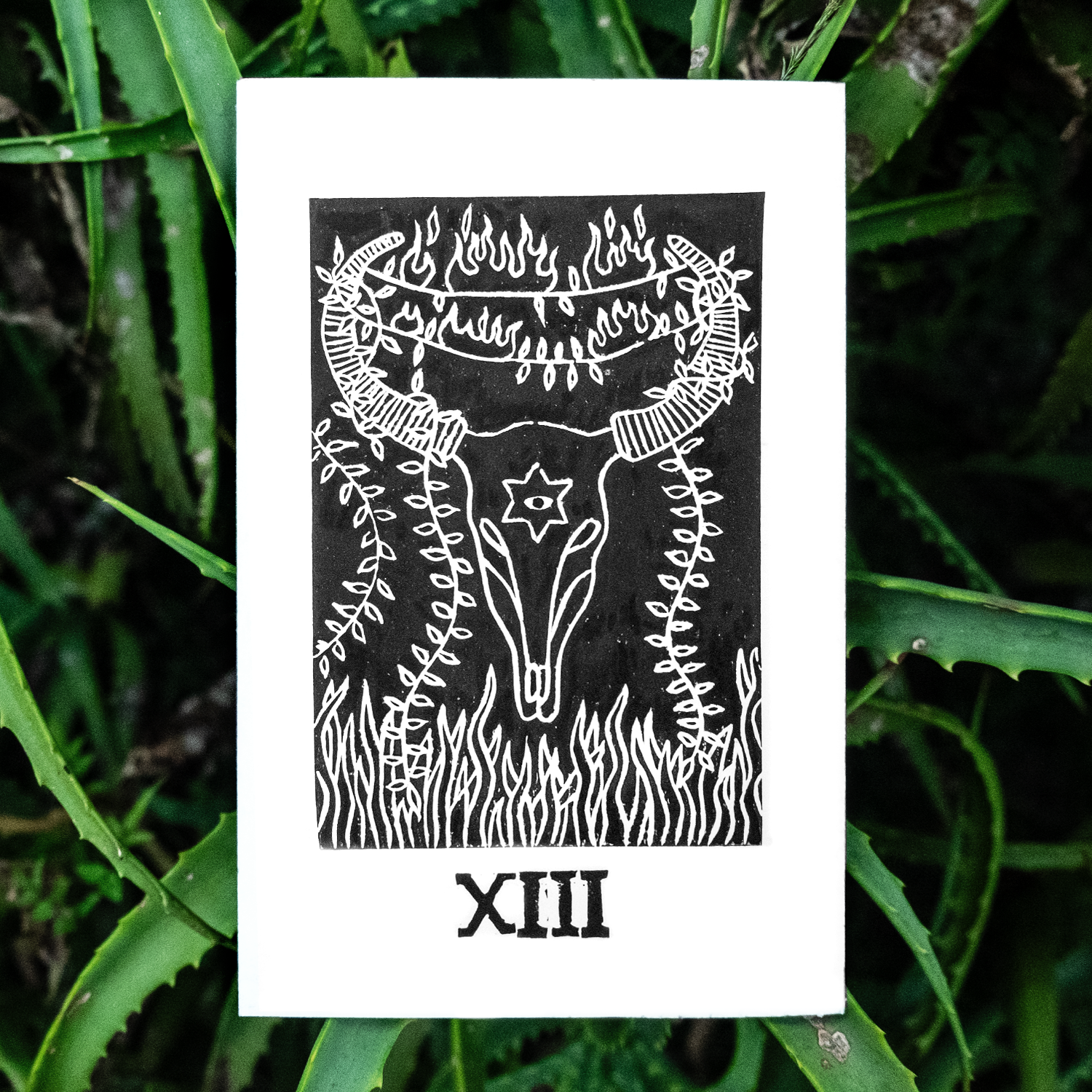

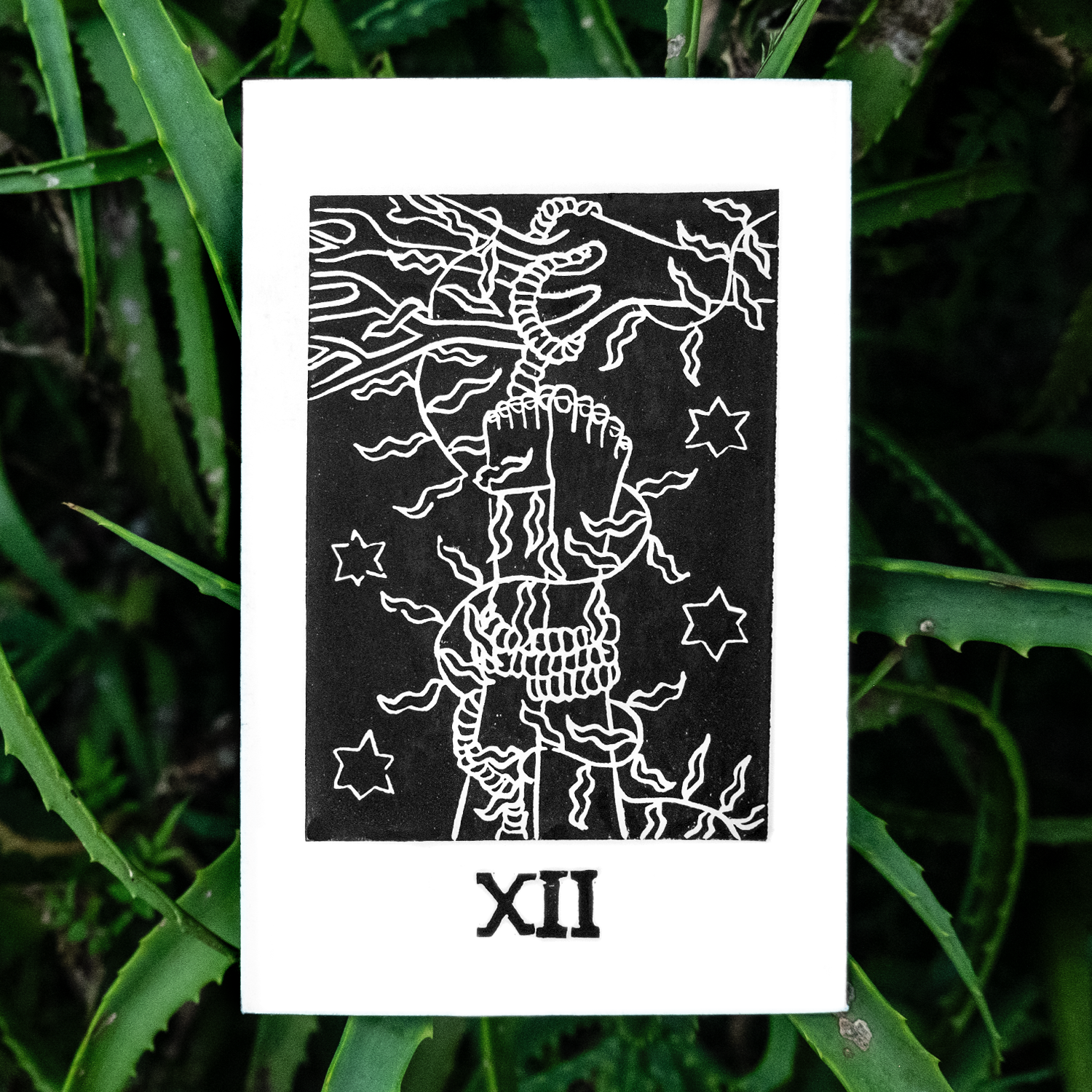
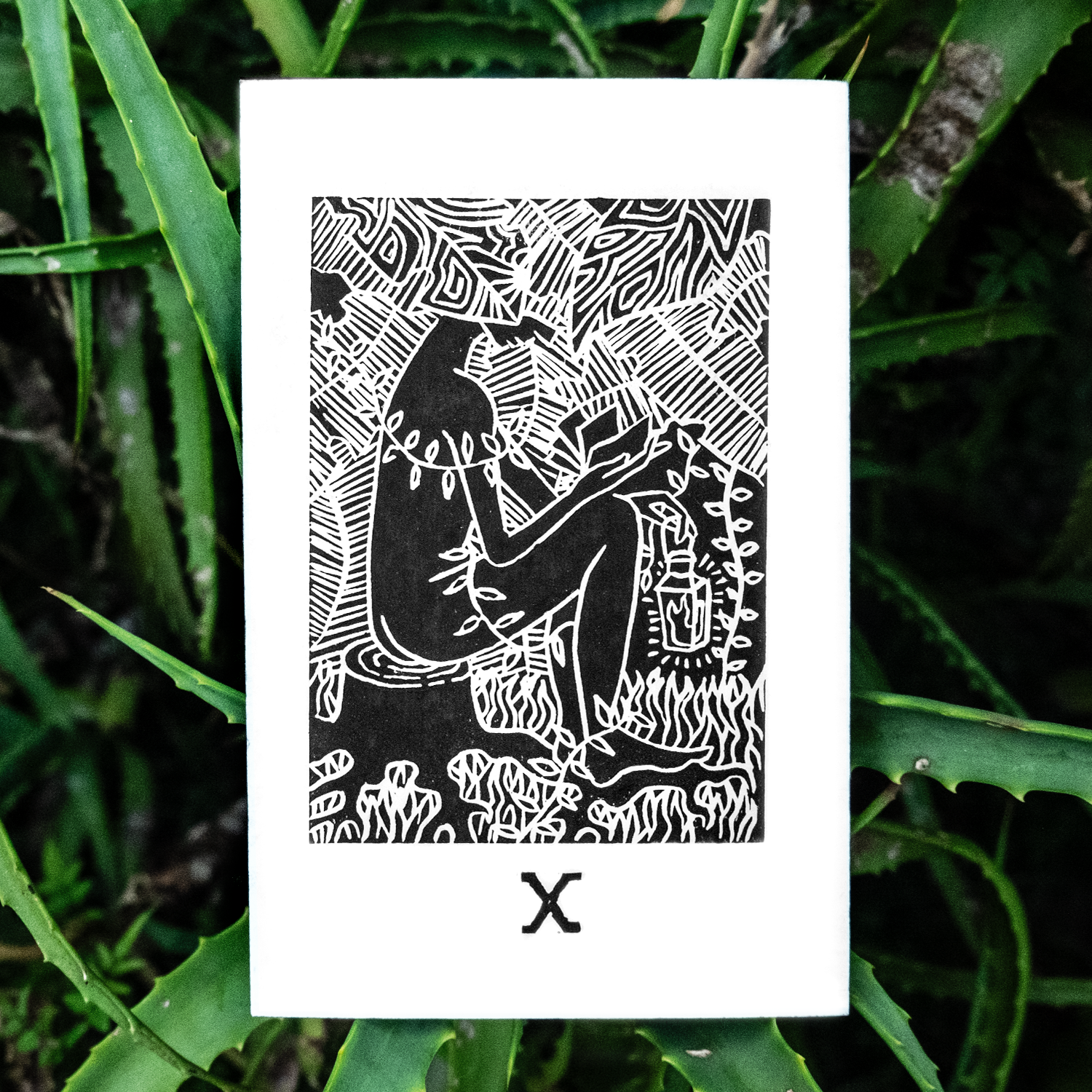
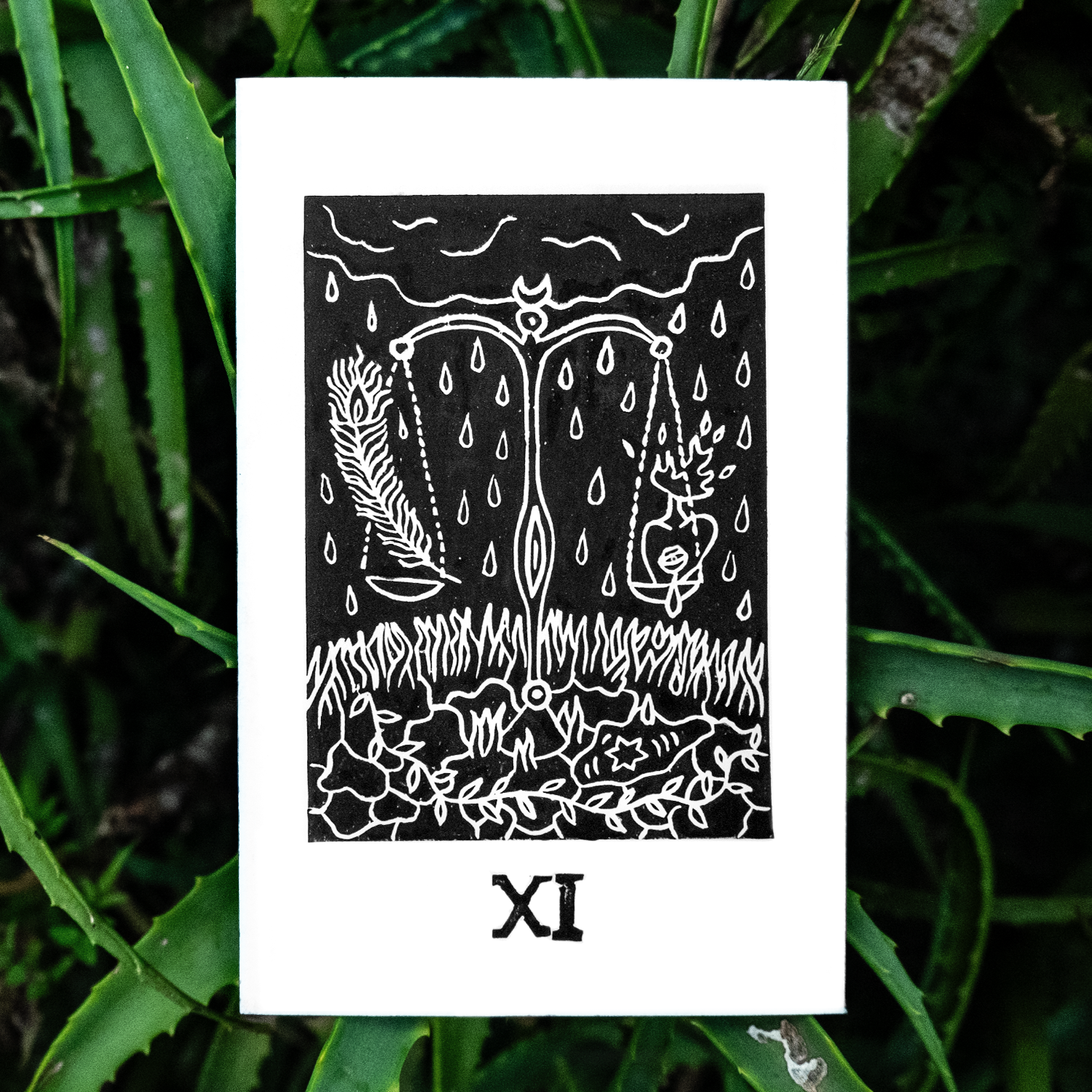
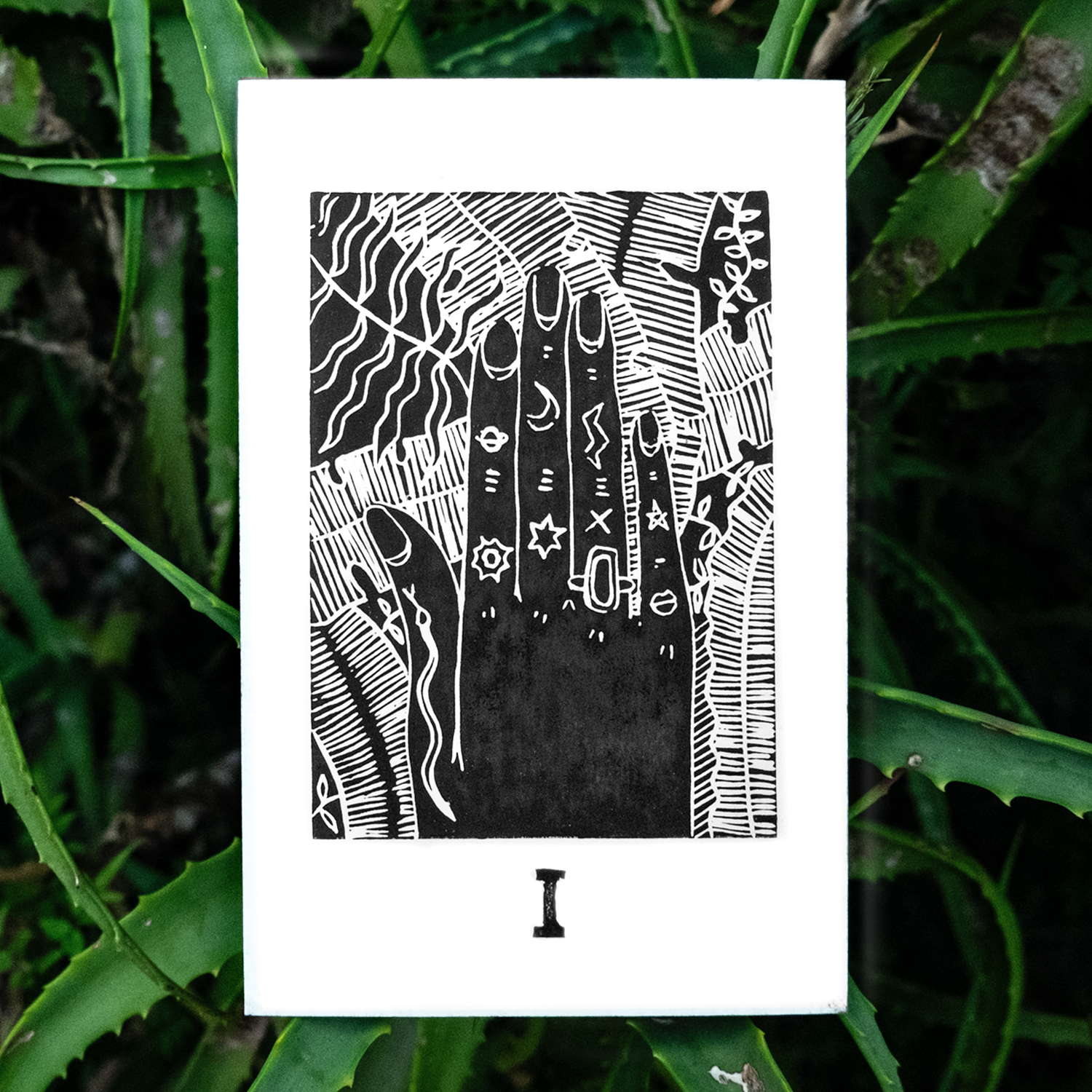
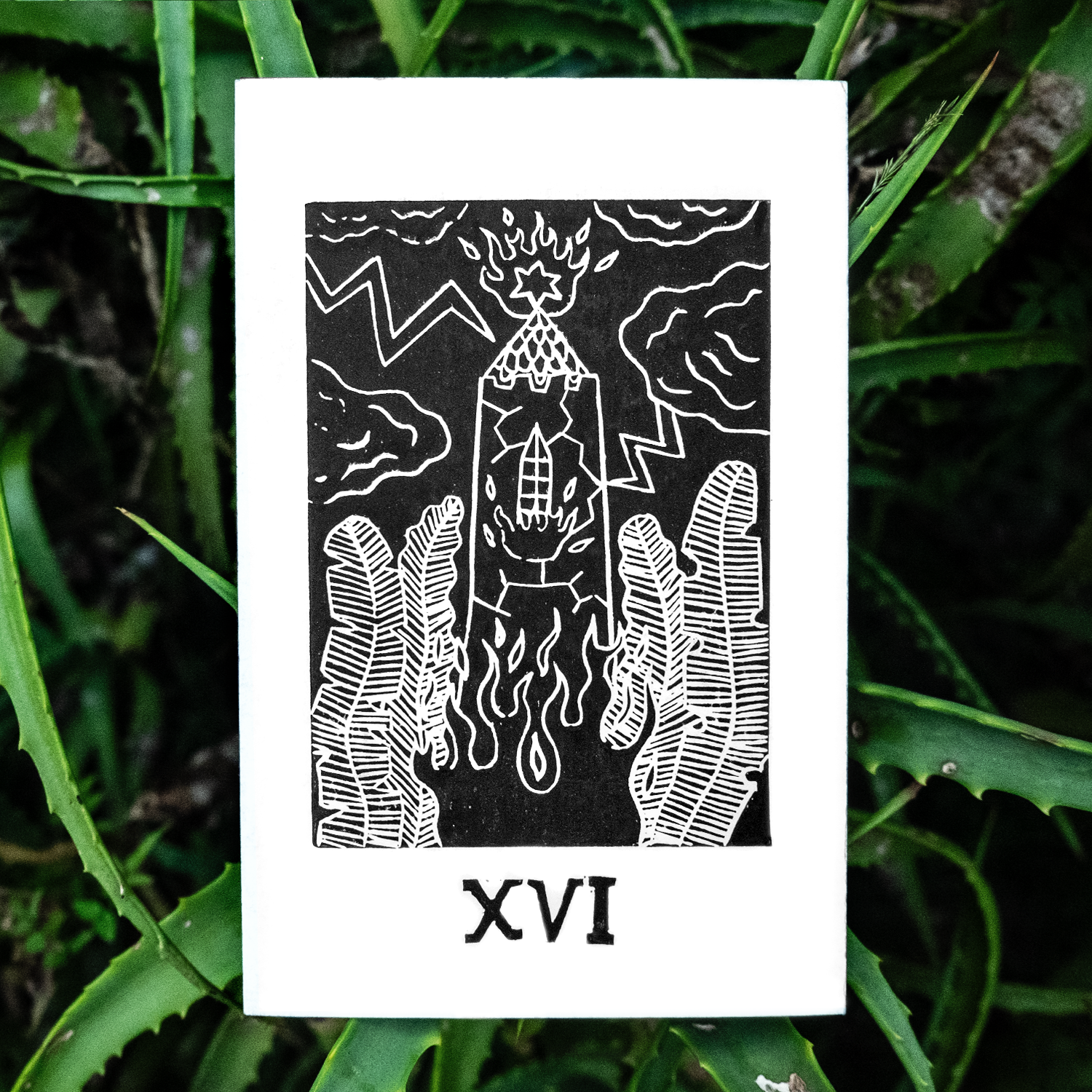
A n u n c e r t a i n m e m o r y
There is a Marija Reikalas’ mythology of cowboy boots, fine tattoos, and long white limbs. Then there is M, with her pair of french leather boots, a castle, and a vintage Ossie Clark. They meet at night at the surface of the water. Marija plunges a fern into it, and M pulls out the other end. They walk around the ocean submerged to their waists. They step on keys and daggers, never knowing which is next. A single seahorse pulls their chariot around. They sit inside, swapping rings and tattooing little stars on each other’s hands. Somewhere on the other side is Marie A. Infinitely old and infinitely young, she sits in a garden surrounded by birds. Using a deck of 22 Tarot cards, she plays with her sisters. The Major Arcana whispers.
She used to collect objects physically and now collects them in her mind. These inner objects sprout from her inner mysteries, problems, and thresholds. With time, they gain significance and become clues to her mythology. She paints the cards herself, some with symbols very different from the usual. For example, The High Priestess card (II), instead of a female figure, shows a pair of cowboy boots broken into by secrets and hidden knowledge. The Wheel of Fortune card (X) is not the usual circle but the unpredictable sea bottom full of luck and misfortune. And the Temperance card (XIV), instead of water decanted between jugs, features a wild cat in pause. Using the deities of her personal experience, she leads to the mystery.
A long, thin, curved piece of land has detached from the Lithuanian coast. There, the shifting dunes make the same path a different journey. From her attic window, Marija Reikalas watches her mother-time ride along the sands towards Zelenogradsk. She sets out alone and comes back with M (an uncertain memory as both mother and M dream profoundly). M, surrounded by her small fires, imagines her mother counting the hours between the tides. Marie A listens to the gallop that shuffles the cards. Eternally pregnant, the mother-time comes back with someone else’s story.
Ivana Sehic



